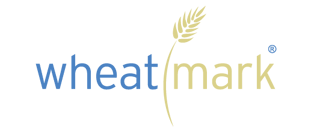You wrote a book. You followed the steps:
- You had it professionally edited
- You had it professionally designed
- You made sure it was distributed with full returnability to sites like Amazon.com and Barnesandnoble.com
- You even did a book signing at a local indie bookstore just for fun
- You created a website and blog for the book
But the sales are just not rolling in. At least not at the level you had expected. What went wrong?
One possibility is that you haven’t transitioned your lifestyle to that of a published author. You are most likely still in “writer” mode.
When people ask you about your experience and hobbies (say at a church potluck), do you still self-consciously say, “Well, um, I actually recently wrote a book,” or do you smile, rummage in your pocket for a business card, and say, “I published my second book last month! Check out my website and read an excerpt!” and hand them the card with the URL printed on it while your audience is still impressed and in awe?
The jumps in lifestyle from “I have an idea” to “I’m writing a book” to “I wrote a book” to “I’m publishing my first book” to “I am a published author” can come with a little vertigo.
Being prepared for that final step is one of more daunting things you’ll work on beyond finalizing your manuscript.
Step One: Find Your Audience
Yes, Wheatmark shouts about this so often, most of us have lost our voices over it. But it is key. If you don’t have someone in mind to sell your book to, you are going to be hard-pressed to sell it to anyone. Lackluster sales are often evidence that you are missing your target audience.
Step Two: Talk with Your Audience
It really doesn’t matter how you do this: sandwich boards, billboards, print ads, bullhorns, parades, Champagne parties, workshops, or any of the tons of avenues on the Internet. What is important is finding your audience’s favorite hangouts and then becoming the most popular kid there. We prefer the Internet because there are so many tools to use, and they offer lots of functionality that real life doesn’t. Online you can cast a narrower net with greater distance.
Step Three: Don’t Let Go
Once you have found your target audience and have figured out the most advantageous way to communicate with them, don’t stop. The constant reinforcement to “pay attention to me” is crucial. Whether it is through email news lists where you mention your next move, your free downloadable chapter, or just asking people to leave Amazon reviews, that constant reinforcement keeps them in your circle and hopefully, if they haven’t yet purchased your book, they will. If nothing else, maybe they’ll tell someone else, and they’ll buy your book.
Step Four: The Waiting Game
I know someone who, at a young age, had an excerpt of his fiction book published in The New Yorker and was soon thereafter wooed and published by a traditional publishing house to great acclaim and expectation. The novel was well received, but didn’t sell. He never wrote anything again for hire.
His title has been all but dropped by his publisher and the royalties he received just aren’t enough to sustain him. Sadly, he doesn’t yet have the rights to republish his book elsewhere to see if it could gain momentum over time.
Lucky you! As independently published authors, your books have the time to gain sales over time and you directly control the amount of marketing, how the marketing is done, and how well the marketing works. But it does take time. Lots of time.
The main skills to master as a published author? Managing your expectations and learning to wait.

